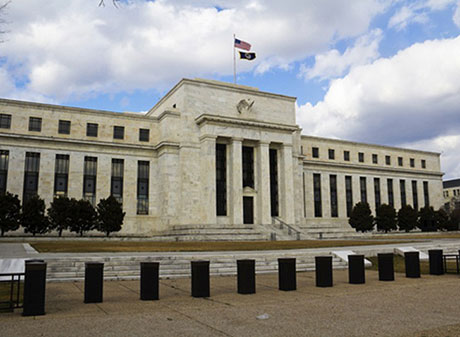The Evolution of Monetary Policy Communication

When it comes to monetary policy, how has Fed communication with the public changed over the years? The modern model of this type of communication “suggests that central bankers prefer to err on the side of saying too much rather than too little,” according to an Economic Synopses essay.
The essay was written by the St. Louis Fed’s Christopher Waller, executive vice president and director of research; Kevin Kliesen, business economist and research officer; and Brian Levine, a former senior research associate. They provided an explanation for the increased communication in recent years.
“The reason is that most central bankers believe that clear communication of monetary policy helps the Fed achieve its congressionally mandated goals of price stability, maximum employment, and stable long-term interest rates by reducing uncertainty about the direction of policy,” they wrote.
Forms of Communication
The authors noted that central bank communication with the public takes many forms, such as:
- The policy statements that many central banks release after meetings
- Press conferences
- Speeches, interviews and testimonies
The authors examined the Fed’s post-meeting policy statements and public remarks by Fed officials before and after the financial crisis.
Post-Meeting FOMC Statement
The policy statement released after each Federal Open Market Committee (FOMC) meeting is the Fed’s principle form of communication with the public, the authors noted. They discussed two ways this statement has evolved over time—the communication policy approach and average length.
Approach
“Prior to the Financial Crisis, the post meeting statement mostly focused on the state of the economy and the Committee’s rationale for raising or lowering the policy rate or explaining why the policy rate was not changed,” they wrote. “In general, little was said about the future path of interest rate changes.”
They went on to say, “But as the U.S. economy transitioned from recession to a slower-than-average recovery, the Fed’s communication policy approach changed. The new approach focused instead on influencing the public’s expectations of the future direction and level of the federal funds target rate.”
They added, “This approach, in its current form, is referred to as forward guidance.”
Statement Length
Related to this evolution in communication, the authors noted that the average number of words in the statements has increased over time—particularly after the federal funds target rate was reduced to near zero (known as the zero lower bound, or ZLB) in December 2008.
The authors explained that the longer statements after the ZLB were largely due to the adoption of quantitative easing policies and other unconventional policies that increased the size of the Fed’s balance sheet and changed its composition.
Public Remarks by Fed Officials
The authors also looked at the evolution in the number of public remarks by Federal Reserve chairs, other members of the Board of Governors and Federal Reserve Bank presidents.
Number per Year
Among the Fed presidents, the authors found that:
- The total number of public remarks was about 150 per year from 1998-2004.
- The total number of public remarks began to increase in 2005 and peaked at a little more than 220 in 2013.
Among Fed chairs and other governors, the authors noted, public remarks were slightly less frequent over the ZLB period than before, though some of this may reflect the fact that the Board has rarely had all seven seats filled.
Number of Days with Multiple Speakers
The authors also discussed how it has become more common for multiple Fed presidents to speak publicly on the same day, while this has become less common among Fed governors. In particular, they found that:
- Among Fed presidents, there were 60 days in 2017 when more than one spoke publicly, compared to about half that number in 2004.
- Among Fed governors, there were only three days in 2017 when more than one spoke publicly, compared to 19 days in 2003.
They noted that “this decline in Fed governor communication reflects, to some extent, the smaller number of Fed governors in office.”
Additional Resources
Citation
ldquoThe Evolution of Monetary Policy Communication,rdquo St. Louis Fed On the Economy, Jan. 8, 2019.
This blog offers commentary, analysis and data from our economists and experts. Views expressed are not necessarily those of the St. Louis Fed or Federal Reserve System.
Email Us
All other blog-related questions

